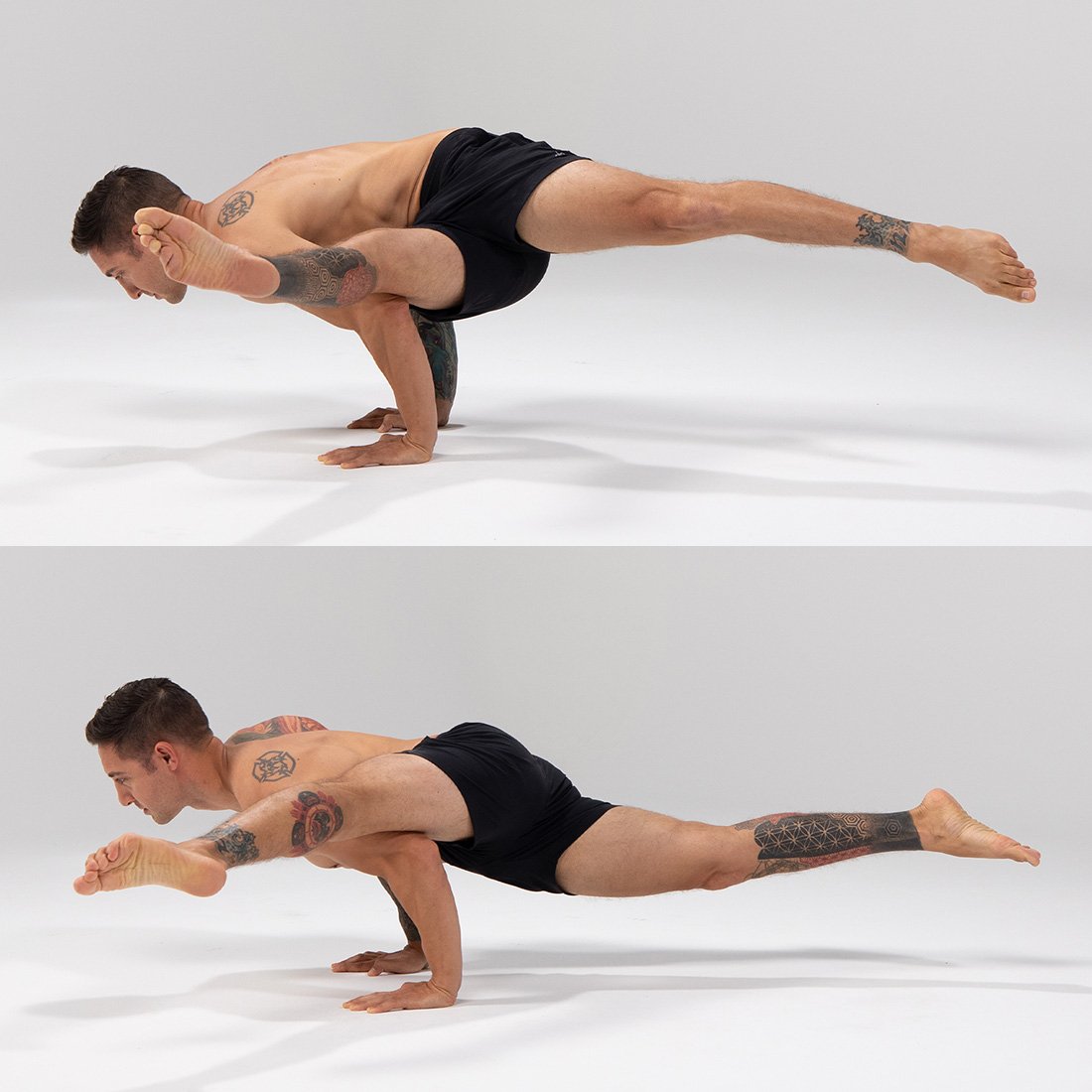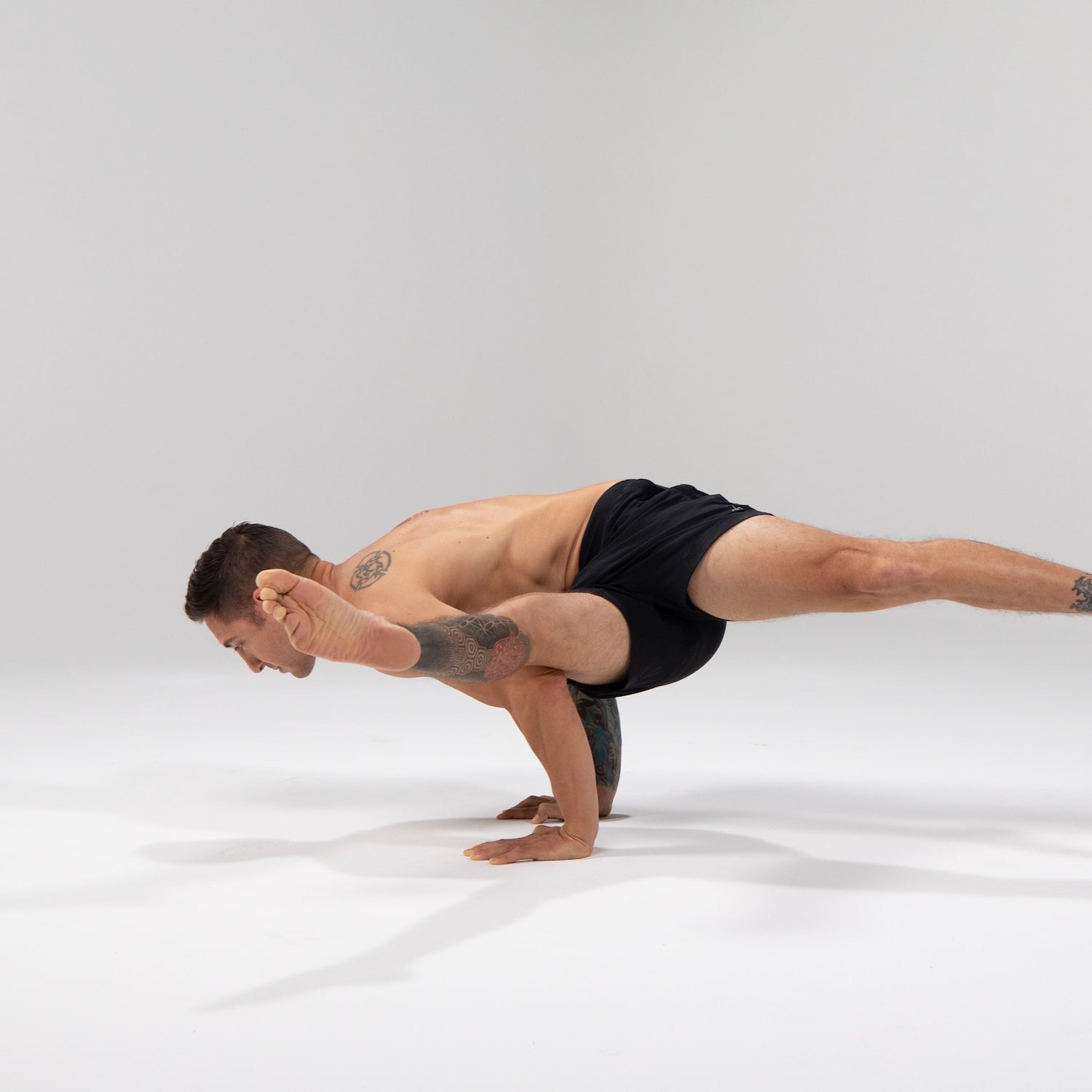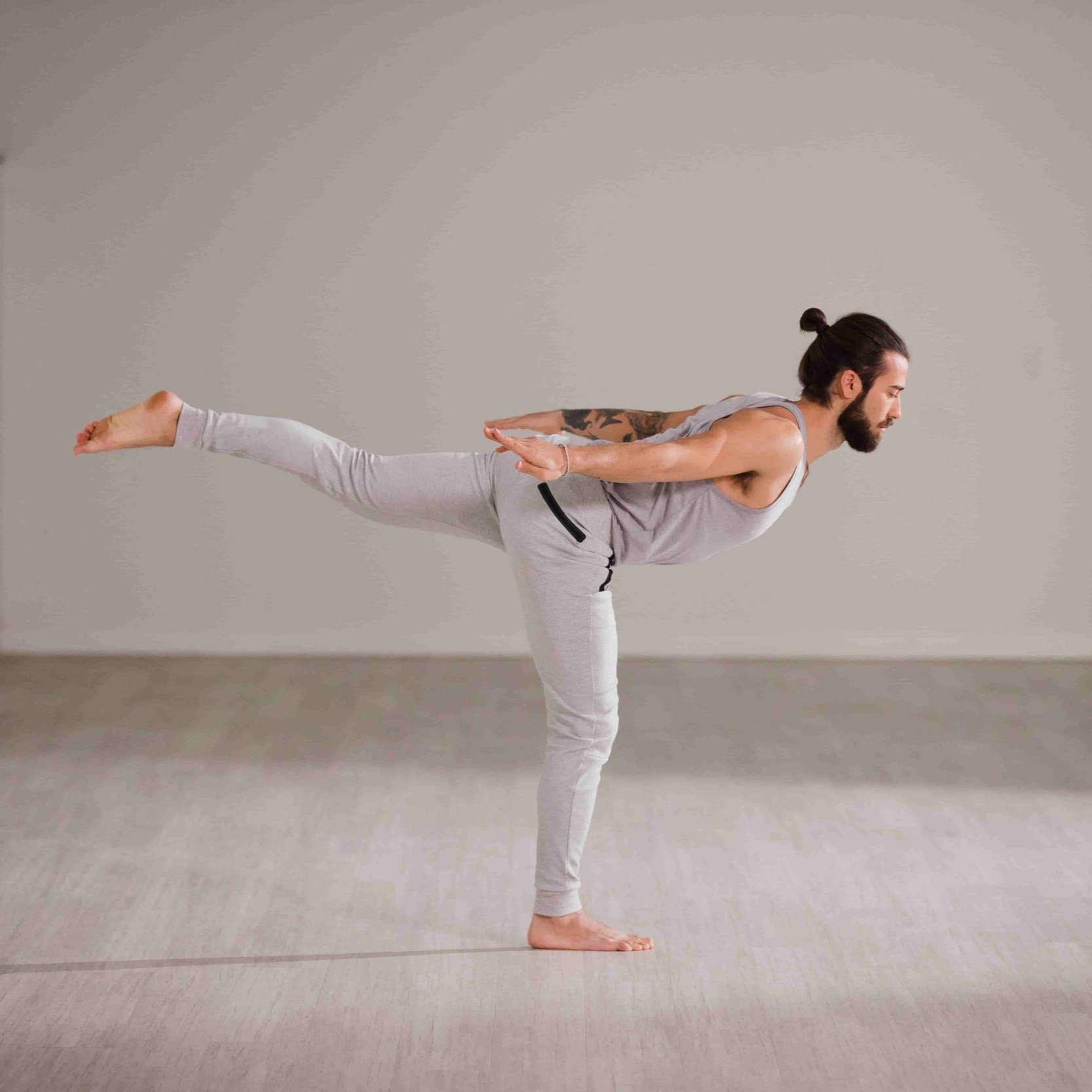Pose Breakdown: Forearm Hollow Back Pose
Forearm Hollow Back Pose, traditionally known as Pincha Mayurasana or Peacock Pose, is a challenging inversion that requires a lot of strength, stability, and focus. It’s an expressive heart-opening pose, but you need the core strength and control to not overarch your back. It’s important to have a strong foundation from the forearms with your shoulders and upper back relaxed to allow for freedom of movement.
It will be helpful to get in touch with your bandhas, or interior locks, to get your form right. Mastering Mula Bandha, or root lock, and Uddiyana Bandha, the navel lock, add stability to any backbend, twist, or inversion, whether it’s a simple forward bend or an advanced inversion like Forearm Hollow Back.
Benefits of Forearm Hollow Back Pose
Strengthens your arms, back, and shoulders
Stretches your chest, neck, and abdomen
Improves balance
Relieves stress and lifts your mood
PREP POSES FOR HOLLOW BACK POSE
Contraindications
If you don’t already have a strong inversion practice, skip this pose until you’re comfortable in a forearm stand. Finding Forearm Stand with Koya Webb on Alo Moves can help you cement your skills.
Talk to a doctor first if you have headaches, high blood pressure, or a heart condition. The same goes for injuries to your back, shoulders, neck, or elbows.
How to DO Forearm Hollow Back Pose
1.
Start with your elbows down on the mat. You can interlace your fingers, place your hands flat on the mat, or bring your hands together in prayer position.
2.
Press your elbows down, tuck your toes under, lift your hips up, and press your chest back.
3.
Bring your gaze forward, walk your feet in, and lift one leg up as you kick into a Forearm Stand.
4.
Bend one leg and charge your straight leg over as you begin to drop your gaze, bringing your head through the gateway of your elbows.
5.
As you press your chest toward the back of your mat, you can bend your straight leg for one variation of this pose.
6.
For another variation, you can sit your glutes back, bring both of your bent legs together, and press your chest forward.
Modifications for Forearm Hollow Back Pose
Start with your forearms near a wall to get some extra support with this pose — once you kick up, rest your feet on the wall for support. Brihony Smith has a how-to video for this modification on the Alo Moves YouTube channel.
History of Forearm Hollow Back Pose
This pose is one of more than 200 poses described in BKS Iyengar’s influential 1966 text Light on Yoga, listed as Pincha Mayurasana.
“Pincha means the chin or a feather,” writes Iyengar. “Mayura means a peacock. At the approach of the rainy season, peacocks dance. When they start they lift up their trailing tail feathers and spread them to form fans. In this posture, the trunk and legs are lifted off the floor and the body is balanced on the forearms and palms. The pose resembles that of a peacock starting his dance.”
The book includes a photo of Iyengar in what he considers the final phase, the “posture of repose”: His elbows are supporting him on the floor as he cups his chin in his hands, as if quietly contemplating.
Ready to get upside down? Power up your inversion practice with classes like Dylan Werner's School of Arm Balance with a free 14-day trial to Alo Moves.

















